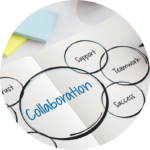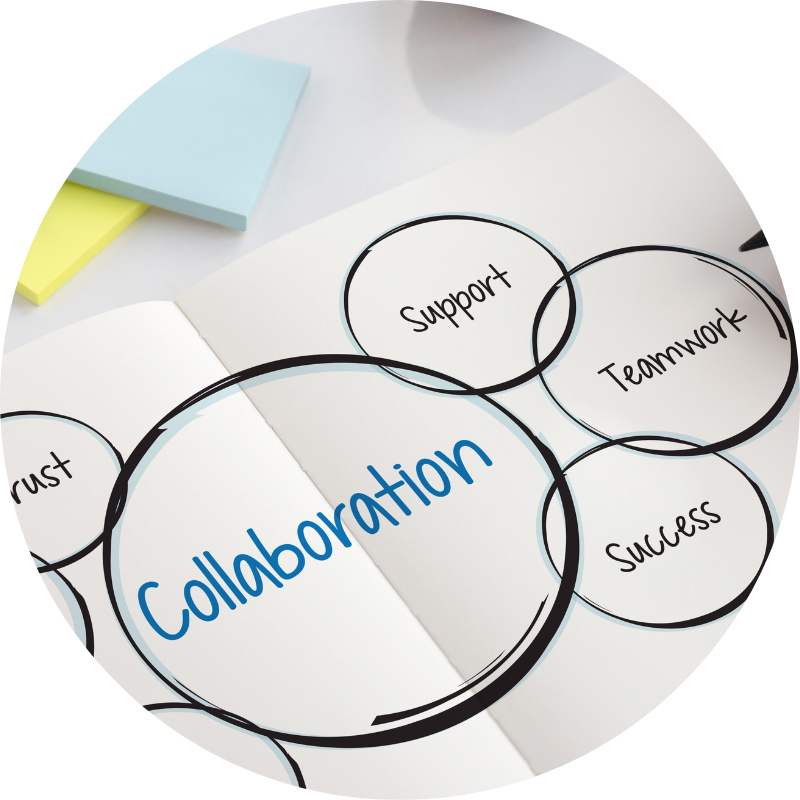 A collaborative office space is a room or area of a workplace which allows people to come together to solve problems, exchange ideas and work towards common goals. Collaborative spaces are known to improve communications amongst team members, boost creativity, improve problem-solving, and spark innovation.
A collaborative office space is a room or area of a workplace which allows people to come together to solve problems, exchange ideas and work towards common goals. Collaborative spaces are known to improve communications amongst team members, boost creativity, improve problem-solving, and spark innovation.
Collaborative spaces also serve as equal territory. In other words, this is a space that is not someone else’s “turf” such as an office, cubicle or other private work area. It’s a communal place free of ownership and distractions that fosters candid, transparent conversations. Productive, in-person exchanges can be strategic, company-culture related or solution-based to address any current events. To protect the image of the collaborative space, the area should be designed for employees to communicate and boast an image where meaningful, positive results are accomplished.
Working together is of enormous value to a company and the collaborative space should reflect that. It’s valuable to have a space where small groups can easily gather. Some businesses create a board room-like conference area or convert an individual office into a collaborative space by adding a table, chairs, technology and meeting supplies.
Outdoor collaborative spaces are also a great option, weather and location permitting. The benefits of spending time outdoors are well known and have shown to decrease stress, improve moods and serve as a nice change of atmosphere. If a suitable outdoor space isn’t an option, consider taking a walk to discuss the issues at hand.
If the workplace layout or availability of space is a challenge, consider creating a collaborative den area or convert the staff room to accommodate meal breaks and meetings. Big or small, these spaces are about bringing the team together, catching-up, impromptu sessions and encouraging teamwork.
As you think about a collaborative space for your organization or updating your current area, consider these additional design elements:
Round tables – provide a better use of space in small areas and keep all participants on equal footing.
Comfortable seating – helps boost efficiency and effectiveness of meetings. If space permits, consider adding furniture such as a couch, arm chairs or recliners.
Cheerful decor – and colors make the space feel more like a home. Consider adding aromatherapy, an accent rug to soften the room, inspiring art, live plants and accent lighting.
Company SWAG – supplies so that people don’t have to bring their own materials. Incorporate fun paper, pens, an easel or white board, and an array of colorful markers.
Make it a phone free zone – by adding a basket to collect phones upon entry. This helps to ensure participants are engaged and free from distractions.
Technology – for presentations or research should be readily available. Consider adding a large monitor mounted to the wall with speakers and internet access.
Snacks and drinks – readily available from a cabinet or small in-room refrigerator. Adding this little touch of extra hospitality is a bonus for the participants. Consider keeping the room stocked with a single-cup coffee maker and supplies, bottled water, soft drinks, light snacks, disposable napkins and cups.
Games and puzzles – are nice to have on hand especially for lengthy conversations or if a break is needed from an intense conversation. Some individuals also have greater problem solving and strategic thinking strengths when using fidget toys such as putty, which has been known to help with anxiety and restlessness. Other fidget games include play dough, resistance stress balls, spinners and slide puzzles. Board games, checkers, chess, Jenga and backgammon are also fun and helpful additions to the space.
A Timer – helps keep priorities on track and can create a boundary so limits are placed on the amount of time spent on a subject or to make sure everyone has an equal amount of time to address a topic.
Lastly, add a splash of your company culture. A mission statement, vision or goals predominantly visible so everyone is committed to the objectives and company focus. Regardless of where your collaborative space is, the objective should be that it is a space where your team wants to gather.
Questions about payroll and human resources? Contact Us for a complimentary review of your payroll solution. Whether you’re an existing client or considering Southland Data Processing, we’re here to help you improve your business operations, develop solutions and provide unrivaled service.
For the latest updates, follow us on LinkedIn, Facebook, Twitter, YouTube, Instagram and TikTok for even more business tips and news.
*Southland Data Processing, Inc. (“SDP”) is not a law firm. This article is intended for informational purposes only and should not be relied upon in reaching a conclusion in a particular area of law. Applicability of the legal principles discussed may differ substantially in individual situations. Receipt of this or any other SDP materials does not create an attorney-client relationship. SDP is not responsible for any inadvertent errors that may occur in the publishing process.

